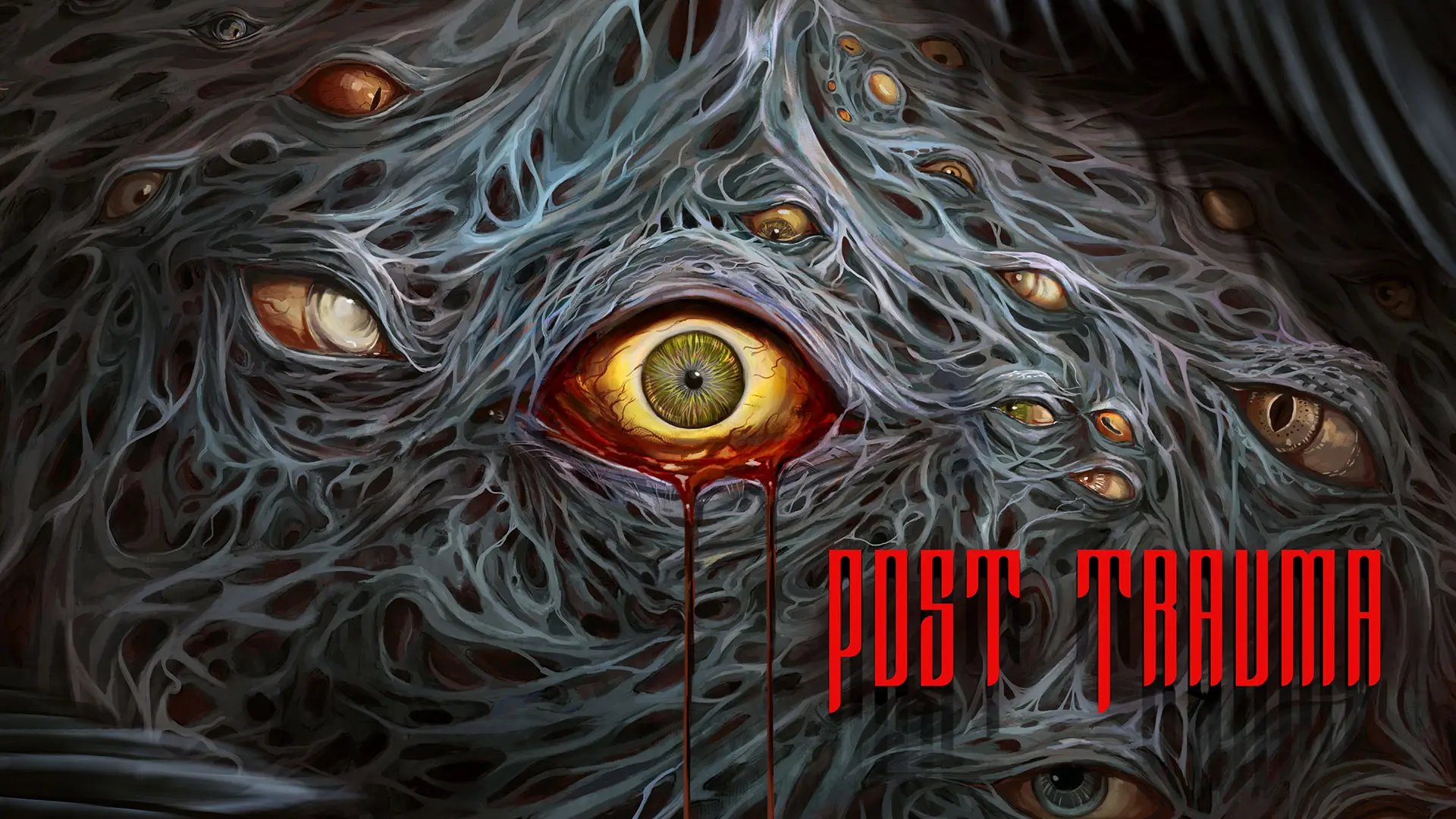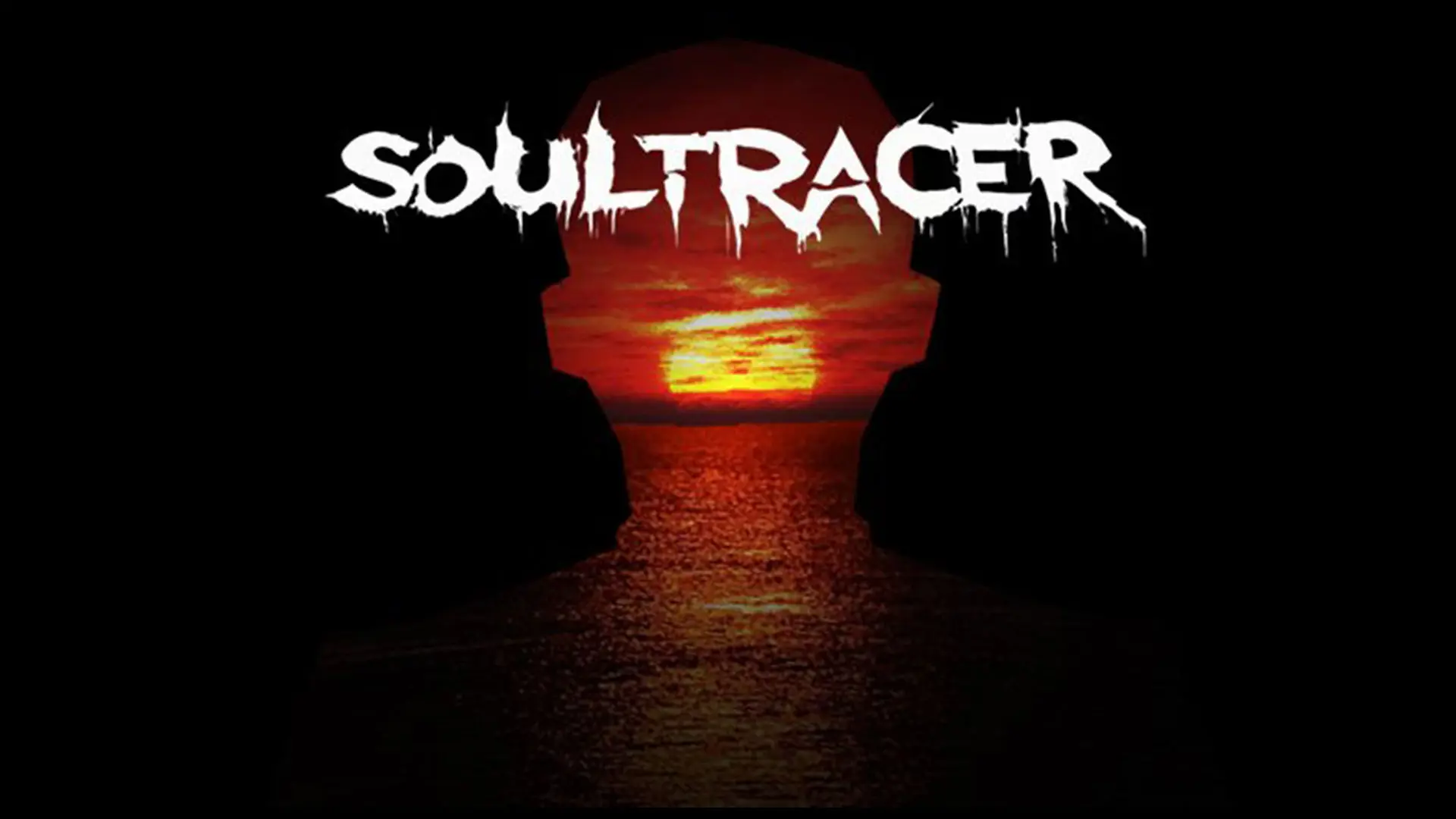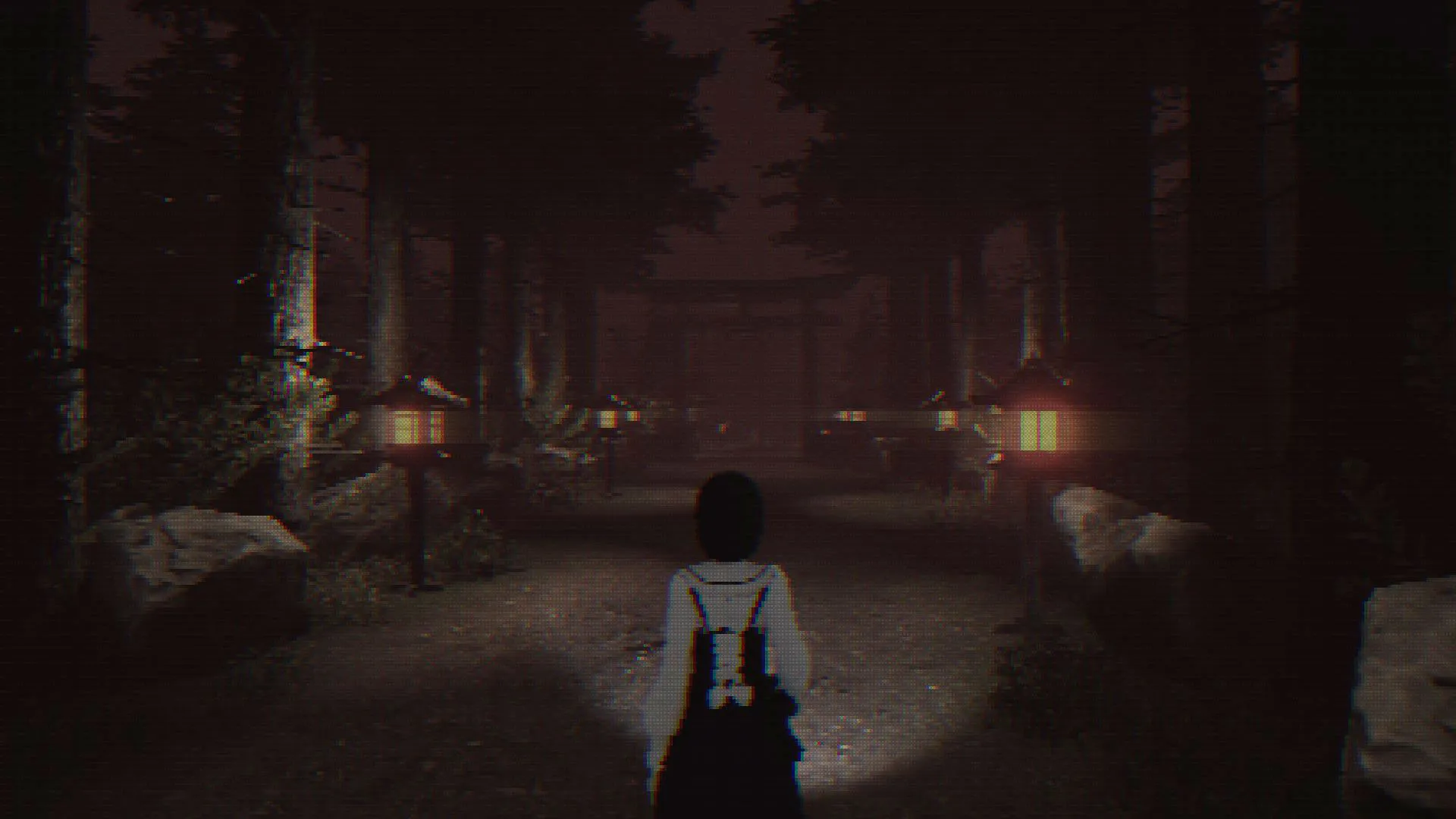Post Trauma – Review

Disclaimer: We were fortunate to gain early access to Post Trauma. The impressions shared in this article are based on that pre-release version. “Not the Next Silent Hill” Post Trauma is a modern indie survival horror game that wears its influences proudly on its sleeve. With fixed camera angles, challenging puzzles, limited combat, and classic save rooms complete with storage chests. It captures the feel of late-’90s horror classics while leveraging the power of Unreal Engine 5 to deliver realistic visuals that heighten the tension and bring its surreal world to life. The game began as a solo development project before gradually expanding to a small team of three to five people at different stages. What this team has accomplished with limited resources is genuinely impressive, much like the spirit of a survival horror game itself. Roberto Serra Gascón, the creator of Post Trauma, posted on Steam, saying, “Some people have seen the trailers and commented, “Post Trauma is the next Silent Hill!”, but let me tell you, it is not… we are aware of the limitations of our game and I hope our players are too.” While this statement helps manage expectations, I think the team is being incredibly modest. The atmosphere in Post Trauma is so well crafted that, at times particularly in some of the environments, it felt on par with, if not better than, the Silent Hill 2 remake. That’s remarkable when you consider the size and resources of the team behind it. While Post Trauma may not match the scale of a modern Silent Hill it shares a similar design philosophy with the recently released Hollowbody, another indie horror title inspired by Silent Hill 2. Both games prioritize atmosphere, puzzles, and psychological tension over combat, staying true to the roots of classic survival horror. That said, Post Trauma offers a longer, more expansive experience, giving its world more time to breathe and unfold. The Environment Is the Clue You start the game locked on a train, and the only way to escape is by solving a puzzle. At first, I thought this was a questionable design choice, but in hindsight, it’s actually the perfect introduction. It immediately sets the tone, Post Trauma is a puzzle focused experience, not a combat heavy one. The best advice I can give going into this game is to pay close attention to your surroundings. Don’t be afraid to use your phone camera to snap photos and take notes of anything that stands out. Clues aren’t spoon-fed to you; they’re often hidden in the environment and conveyed through visual storytelling and imagery, rather than text. That took a bit of adjustment for me, as I’m used to more text heavy clues, which I usually don’t enjoy. So this more visual, interpretive approach was a refreshing change. Surreal Atmosphere The atmosphere in Post Trauma is brilliant — from the moment you step off the train, it’s clear that a huge amount of care went into the environment and set design. One of the game’s greatest strengths is its surreal, dreamlike tone. From haunting enemies and unsettling mannequins to corridors that feel like they’ve slipped out of a fever dream, the world of Post Trauma is deliberately disorienting and deeply immersive. A large part of that comes from the vision of Pau Pujadas, who joined the team as concept artist and art director shortly after the studio partnered with Raw Fury. Pau took the surreal ideas at the heart of the game and dialed them up dramatically, creating bizarre, beautiful concept art that shaped its distinct, otherworldly identity. And it’s not just concept art — Post Trauma‘s 3D models deliver visual moments that rival big-budget AAA titles. Though Pau’s background is in 2D, he quickly adapted to 3D sculpting, crafting many of the game’s most memorable organic designs. Thanks to Unreal Engine 5’s Nanite technology, those surreal sculptures were brought directly into the game world in stunning detail. An Unlikely Protagonist I know I’ve already said this, but it’s worth emphasising, this is not a combat heavy game. If you’re looking for intense action, you’re in the wrong genre. In Post Trauma, not every battle needs to be fought or won, sometimes, running is just as valid as fighting. That’s true of most classic survival horror games, and it holds true here. Not only is combat minimal in Post Trauma, but movement is also deliberately sluggish, and that’s very much a design choice. Without giving too much away, Roman isn’t the only playable character, and one of the others moves with a noticeably smoother, almost gliding motion by comparison. I’m not the first to point this out, but Roman is a refreshingly unconventional survival horror protagonist. He’s just an ordinary man, not a fighter, and if he runs for too long, he gets winded and has to stop to catch his breath. Honestly, I can relate. A vulnerable character is a core element of the genre, and it’s nice to see a break from the usual “young girl” trope. Interestingly, the original concept for Post Trauma did feature a young female lead, but when Epic released their digital human creation tools, the team pivoted to Roman instead. Fixed Camera Angles I think it’s important to highlight just how well-executed the camera work is throughout Post Trauma. Above is a short video showcasing some of my favourite moments. It’s not just about where the camera is placed — it’s about how it’s used to enhance the atmosphere and storytelling. For example, as you exit the train at the start of the game, the camera lingers behind, peering out from inside the carriage. In the claustrophobic hospital archives, it tracks you from behind rows of shelves, adding a layer of unease and tension. It’s not just atmospheric — it’s also a smart and practical choice, making it much easier to navigate the tight, cluttered space without getting disoriented. I’ve played other indie horror games with fixed cameras that feel awkward or limiting, but that’s not the case
Soultracer Interview

We recently spoke with Alejandro, the indie developer behind Soultracer, an upcoming PS2-style survival horror game with classic roots and modern storytelling. Under the name Silent Archangel Studios, Alejandro is bringing a nostalgic yet fresh perspective to the genre. We asked him about his background, inspirations, the haunting town of Aerie Vista, and what makes Soultracer stand out. Q: Introduce yourself! Who are you and what is your background in game development?Alejandro:I’m Alejandro, a 25-year-old solo developer under the name Silent Archangel Studios, working on Soultracer. I’m based in Peru, where there aren’t many games being developed, especially in the survival horror space. That’s one reason I wanted to make my own. I started with Unity back in 2015, making a simple first-person horror game just for fun. I showed it to my friends at school, loved their reactions, and realized I wanted to keep creating. I returned to Unity in 2020, experimenting with new ideas until, in 2024, I finally felt ready to create the game I had always envisioned. Q: What survival horror games inspired you to create Soultracer?Alejandro:In 2005, I played the original Alone in the Dark on my family’s old computer. It couldn’t run modern games, so those classic ones were perfect. I loved how situations could be solved in creative ways, like avoiding combat by placing soup on a table. That really stayed with me. My older brothers also played Resident Evil on the PS1, which introduced me to survival horror. I later got into Dino Crisis, The New Nightmare, and others.What drew me in were the unpredictable elements and atmospheric tension. Soultracer reflects that. I love classic horror storytelling, where characters unknowingly walk into danger. In this game, it’s about saving the whole group, not just the protagonist. I want players to care about the characters and face genuine risk while navigating a world that always feels threatening. Q: Can you tell us more about Aerie Vista? Is it based on a real place or purely fictional?Alejandro:Aerie Vista is a fictional U.S. town, and unlike many horror game settings, it’s not abandoned. It’s actually beautiful, especially at sunset, with an oceanfront and rich history. In Soultracer, a group of friends finds themselves trapped in another world after discovering a mysterious gateway.The cast includes Rachel (rebellious and charismatic), Johnny (lighthearted and loyal), Ashen (quiet and intelligent), and the protagonist, who the player names. The group originally met online in a video game, and this is their first time meeting in person. There’s also a strange man who helps you early on. Each character affects the story in meaningful ways. Q: The ability to separate your soul from your body is a fascinating mechanic—it reminds me of The Nomad Soul. How does it work in gameplay?Alejandro:At certain moments, the protagonist can separate their soul from their body. When this happens, the camera shifts to first-person, you float above your own body, which is in pain. You can’t stay out too long or you’ll lose health.This mechanic adds a twist to puzzle-solving. As a soul, you can see things your body can’t and interact with objects in different ways. I wanted to expand on traditional horror puzzles by rewarding exploration and experimentation.There’s also a mysterious Bartender. Her bar acts as a hub where you trade collected souls for items and weapons. Backtracking is present but not excessive, more of a reward for explorers than a punishment. Like in Resident Evil, the map shows rooms that still have items, helping players avoid frustration. Q: Your Steam page mentions that things won’t always be the same on different playthroughs—what kind of changes can players expect?Alejandro:At the start, players answer a few short questions, including entering their name. These responses affect small but meaningful things. A cautious player might receive different starting items than a more aggressive one.Enemy placement and some story moments shift based on your answers. Later on, major decisions arise that can significantly change how the story plays out. Some might seem small at first but will have big consequences by the end. I want players to feel that their choices matter, encouraging them to replay and see different outcomes. Q: What do you hope players will take away from Soultracer?Alejandro:I hope they feel like they experienced a classic survival horror game with a modern heart. I want it to be atmospheric, meaningful, and personal—and for players to care about more than just survival. If you’re intrigued by what you’ve seen so far, be sure to wishlist Soultracer on Steam to stay updated on its release. You can also follow Silent Archangel Studios on Twitter/X for development updates, behind-the-scenes content, and more.
Kurai Yama – Upcoming Survival Horror

Introduction: Meet the Developer Horror and retro aesthetics go hand in hand, and solo indie developer D4C is bringing them together in Kurai Yama, a survival horror experience inspired by the golden era of the genre. Based in Tunisia, D4C has been experimenting with game design for years, crafting prototypes and refining his skills before finally launching his first official title. Despite being his first full game, Kurai Yama is shaping up to be a carefully crafted homage to the chilling atmosphere of classic survival horror games. Inspired by the Legends of Horror D4C’s love for survival horror started young, with Dreamcast and PS1-era classics shaping his vision. Titles like Resident Evil, Silent Hill, and Fatal Frame left a lasting impression on him, from their atmospheres to their unique control schemes. “That mix of tank controls, fog-drenched dread, and ghostly vibes it’s what lit the spark for my game,” he explains. This nostalgic inspiration is at the heart of Kurai Yama, a game that seeks to recreate the slow-burning tension and unsettling exploration that defined those early horror masterpieces. What Makes Kurai Yama True Survival Horror? Unlike modern horror games that often lean into action elements, Kurai Yama stays purely survival horror in design. It features: With no weapons to rely on, the game emphasizes the feeling of vulnerability, putting players in Saki’s shoes as she navigates the dangers of Hozuki. Story & Setting: A Haunting Mystery Kurai Yama follows Saki, a goth girl from Japan with a fascination for the supernatural. She spends her nights combing through obscure internet forums in search of ghost stories until she stumbles upon a thread about Hozuki, a town shrouded in rumors and disappearances. As she reads through the posts, she comes across something terrifyingly personal: her sister Reiko’s name, listed among the missing. Reiko vanished without a trace five years ago, and no one has been able to uncover what happened to her. Determined to find answers, Saki boards a train to Hozuki, a town steeped in dark secrets. What awaits her is a nightmare she never expected. Final Thoughts Kurai Yama is shaping up to be a true throwback to the survival horror era, bringing back the dread, tension, and vulnerability that made those early titles unforgettable. With classic gameplay mechanics, an engaging mystery, and a deeply atmospheric world, it’s one to keep an eye on for horror fans looking for something genuinely unsettling. Are you ready to step into the unknown and face the horrors of Hozuki?You can follow D4C’s journey on Twitter/X (@MarincessStudio) or check out his work at marincess-studio.com.
Kanpeki: Upcoming Survival Horror

Indie developers Streetlight Studio are taking a fresh yet nostalgic approach with their upcoming game Kanpeki, blending classic survival horror elements with unique mechanics and a striking aesthetic. I reached out to the developers of Kanpeki to ask what they are working on, and they shared their vision, inspirations, and challenges in bringing the game to life. Inspired by Classic Survival Horror When asked about their inspirations, the developers emphasized their love for retro horror games. Kanpeki draws from beloved classics like Haunting Ground, the Fatal Frame series, and the indie horror title World of Horror. The goal? To create a game that feels like a tribute to early 2000s PS2 style survival horror while integrating modern mechanics and storytelling. Beyond video games, the team also pulls inspiration from cult Japanese horror films such as Kami Kaze Girls, Noroi, and Suicide Club. These influences shape the game’s distinct visual style, combining traditional horror aesthetics with a surreal and cinematic approach. Innovative Gameplay Mechanics Kanpeki follows in the footsteps of early Silent Hill and Resident Evil titles in terms of gameplay, but with a twist. The most unique mechanic is the “breathing mechanic,” where the main character, Hoshi, holds her breath to the point of hallucination. This not only adds to the tension but also alters the game environment, revealing hidden threats and unsettling changes. Another standout feature is the “Stickers” system, reminiscent of the charm mechanic from Hollow Knight. This allows players to customize Hoshi’s abilities with a Gyaru-themed twist, reinforcing her personality while also affecting gameplay. A Story Rooted in Social Expectations At its core, Kanpeki tells a deeply personal and socially conscious story. The protagonist, Hoshi, is a Gyaru—a subculture often misunderstood and overlooked in media. The game explores themes of social expectations, identity, and the pressures young women face. Set in a rural Japanese town in the early 2000s, Kanpeki presents a world where people mysteriously disappear, yet no one seems to acknowledge it. Hoshi finds herself drawn into a parallel version of reality, where she must navigate twisted environments and terrifying encounters to escape back to her normal life. Each chapter is designed to explore a different aspect of social expectations, ensuring a thought-provoking experience beyond the scares. The Team Behind the Horror Streetlight Studio is a small but passionate team of indie developers, ranging from two to six members at any given time. Fresh out of video game school, the team hails from various parts of Europe, including France, Portugal, and Germany. Despite having no funding, they have poured their hearts into making Kanpeki a reality, balancing work with their creative vision. For those eager to follow the game’s development, the best place to stay updated is through their Discord, which can be found via their Linktree. Fans can also visit their official site on Neocities. What’s Next for Kanpeki? The team is currently working on a Chapter 0, which will focus on Hoshi’s life before the supernatural events unfold. This introduction, alongside a revamped Chapter 1, will provide players with a more immersive experience and deeper insight into the game’s themes. From there, the future of Kanpeki will depend on the reception and support from fans. For horror enthusiasts looking for something fresh yet familiar, Kanpeki is shaping up to be a standout indie title. With its blend of classic survival horror gameplay, unique mechanics, and a compelling narrative, it’s a project worth keeping an eye on.

